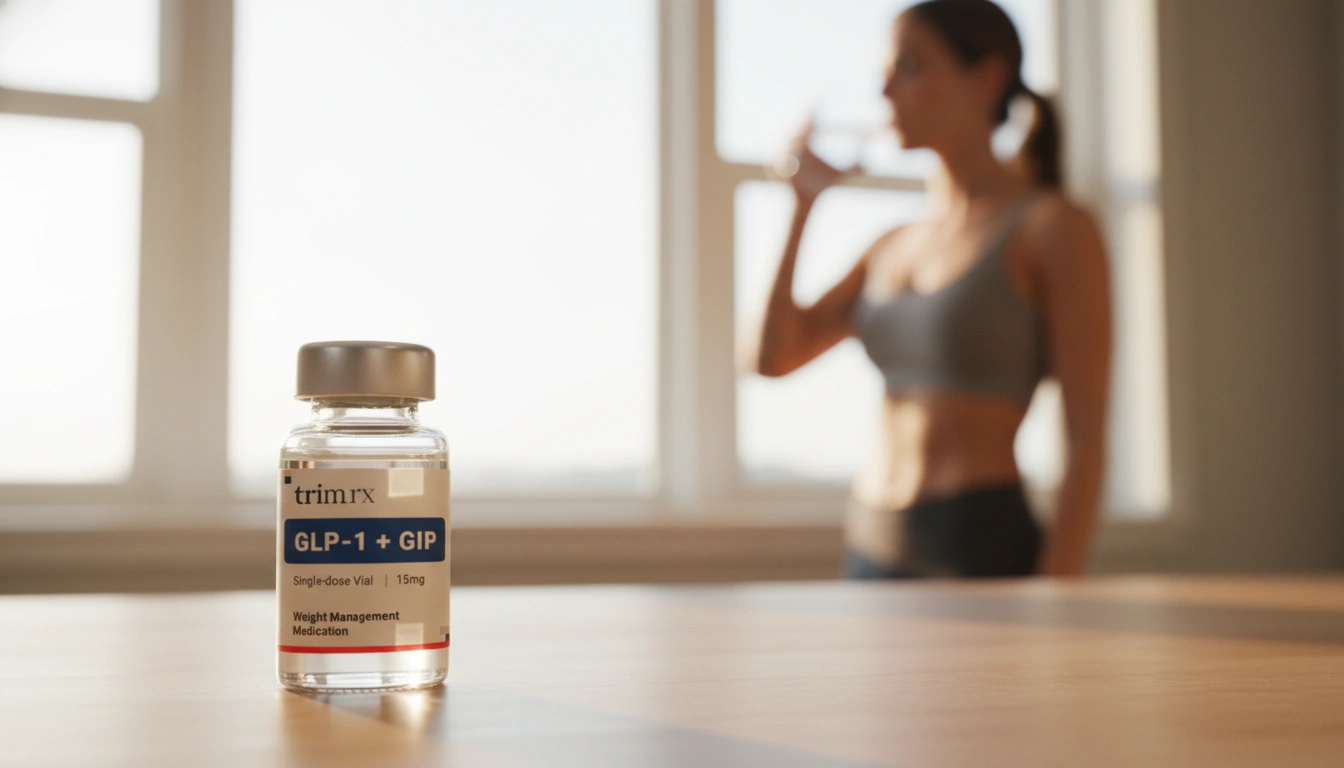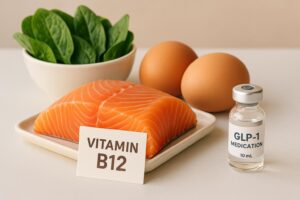What Foods Activate GLP-1? A Comprehensive Guide to Boosting Your Well-Being

Introduction
Did you know that one of the most powerful hormones in our bodies, glucagon-like peptide-1 (GLP-1), plays a critical role in regulating appetite and blood sugar levels? This remarkable hormone not only helps us feel full but also signals the pancreas to release insulin. With the rise in obesity and type 2 diabetes, understanding how to maximize the natural production of GLP-1 through diet has become increasingly important.
In this blog post, we will delve into the fascinating world of GLP-1, exploring its functions, the foods that can stimulate its production, and practical ways to incorporate these foods into our diets. By the end of this article, you will have a clearer understanding of how to enhance your GLP-1 levels naturally, which can support your overall health and weight management goals.
We will cover the following key areas:
- The role of GLP-1 in the body
- Foods that activate GLP-1 and their mechanisms
- Practical dietary tips to boost GLP-1 levels
- The connection between GLP-1, weight loss, and overall health
- Frequently asked questions about GLP-1 and its activation
Let’s embark on this journey together as we uncover the best dietary practices to elevate your GLP-1 levels and enhance your health!
Understanding GLP-1
What is GLP-1?
GLP-1 is a hormone produced in the intestines, primarily by the L-cells in response to food intake. It serves several critical functions in the body, including:
- Stimulating Insulin Secretion: GLP-1 promotes the release of insulin from the pancreas when blood sugar levels rise, aiding in glucose regulation.
- Inhibiting Glucagon Release: It reduces the secretion of glucagon, a hormone that raises blood sugar levels, thus helping maintain stable glucose levels.
- Slowing Gastric Emptying: By delaying the emptying of the stomach, GLP-1 helps prolong feelings of fullness after meals.
- Regulating Appetite: GLP-1 sends signals to the brain indicating satiety, thereby reducing food intake.
These functions make GLP-1 a key player in appetite control and metabolic health, making it an important target for dietary and lifestyle interventions.
Why is GLP-1 Important for Weight Management?
As obesity rates continue to rise globally, the importance of hormones like GLP-1 in weight management becomes even more pronounced. Research shows that increasing GLP-1 levels can help reduce appetite and improve insulin sensitivity, making it easier for individuals to manage their weight and blood sugar levels effectively.
Moreover, medications that mimic GLP-1, such as semaglutide, have gained attention for their role in aiding weight loss. However, incorporating certain foods into our diet can also naturally boost GLP-1 levels without the need for medication.
Foods That Activate GLP-1
Certain dietary components are known to stimulate GLP-1 secretion effectively. Let’s explore these foods in detail:
1. High-Fiber Foods
Why Fiber Matters: Fiber is essential for digestive health, and it plays a significant role in enhancing GLP-1 secretion. When fiber is fermented in the gut, it produces short-chain fatty acids (SCFAs) that stimulate GLP-1 production.
Key Sources:
- Whole Grains: Foods like oats, barley, and whole wheat are rich in soluble fiber, which can help increase GLP-1 levels.
- Fruits: Apples, pears, and citrus fruits are high in fiber and can contribute to GLP-1 activation.
- Vegetables: Leafy greens, Brussels sprouts, carrots, and legumes like beans and lentils are excellent choices for boosting fiber intake.
2. Protein-Rich Foods
The Power of Protein: Proteins and amino acids are known to stimulate GLP-1 secretion. Meals that are higher in protein tend to enhance feelings of fullness and may decrease overall calorie consumption.
Key Sources:
- Eggs: Research indicates that eggs can effectively boost GLP-1 levels due to their high protein content and healthy fats.
- Fish: Fatty fish like salmon are rich in omega-3 fatty acids, which not only support heart health but also help activate GLP-1.
- Lean Meats: Chicken and turkey are other excellent sources of protein that can contribute to GLP-1 secretion.
3. Healthy Fats
Fats that Fuel GLP-1: Unsaturated fats can also enhance GLP-1 secretion. Incorporating healthy fats into meals can help slow digestion and promote satiety.
Key Sources:
- Avocados: Rich in fiber and healthy fats, avocados can significantly boost GLP-1 levels.
- Nuts and Seeds: Almonds, walnuts, and chia seeds are packed with healthy fats and fiber, making them ideal for increasing GLP-1.
- Olive Oil: Studies suggest that unsaturated fats from olive oil can stimulate GLP-1 more effectively than saturated fats.
4. Fermentable Foods
Fermentation and GLP-1: Foods that are fermentable can enhance gut health and contribute to GLP-1 production through the process of fermentation.
Key Sources:
- Fermented Foods: Foods like yogurt, kefir, sauerkraut, and kimchi contain probiotics that can promote a healthy gut microbiome, which is essential for optimal GLP-1 secretion.
- Prebiotic Foods: Foods rich in prebiotics, such as garlic, onions, and asparagus, can feed beneficial gut bacteria, contributing to SCFA production and GLP-1 activation.
Summary of Foods That Activate GLP-1
To boost your GLP-1 levels, consider incorporating the following foods into your diet regularly:
- High-fiber foods: whole grains, fruits, vegetables, legumes
- Protein-rich foods: eggs, fish, lean meats
- Healthy fats: avocados, nuts, olive oil
- Fermentable foods: yogurt, fermented vegetables, prebiotic-rich foods
Practical Dietary Tips to Increase GLP-1 Levels
Meal Timing and Composition
- Prioritize Protein: Start your meals with protein-rich foods to enhance GLP-1 secretion and promote satiety throughout the day.
- Opt for Fiber: Include high-fiber foods in every meal to support digestion and prolong feelings of fullness.
- Mindful Eating: Take your time while eating. Slower, more mindful eating can enhance GLP-1 secretion and help you recognize feelings of fullness.
Hydration Matters
Staying hydrated is crucial for digestive health. Drinking plenty of water can improve gut function and may also support GLP-1 production indirectly.
Combine Nutrients for Best Results
Creating meals that combine protein, healthy fats, and fiber can have a synergistic effect on GLP-1 secretion. For example, consider a breakfast of scrambled eggs with avocado on whole-grain toast topped with sliced tomatoes.
The Connection Between GLP-1, Weight Loss, and Overall Health
As we focus on boosting GLP-1 levels through dietary changes, it’s essential to recognize the broader implications for weight management and health.
Weight Loss and GLP-1
Research shows that individuals with higher levels of GLP-1 tend to experience reduced appetite and improved weight management. By incorporating GLP-1-activating foods into our diets, we can create a sustainable approach to weight loss that focuses on healthy eating habits rather than restrictive dieting.
Additional Health Benefits
Beyond weight management, increasing GLP-1 levels through diet may also support cardiovascular health, improve insulin sensitivity, and reduce the risk of type 2 diabetes. These benefits highlight the importance of nurturing our gut health and making informed food choices.
FAQ
What are the best foods to activate GLP-1?
Foods high in fiber (like whole grains, fruits, and vegetables), protein-rich foods (such as eggs, fish, and lean meats), and healthy fats (like avocados and olive oil) are the best choices for activating GLP-1.
Can I increase GLP-1 levels through supplements?
While certain supplements may have potential benefits, focusing on a diet rich in whole foods is the most effective way to naturally boost GLP-1 levels. Supplements should be approached cautiously and discussed with a healthcare provider.
How quickly can I see results from dietary changes to increase GLP-1?
Results may vary, but many individuals may begin to notice improvements in appetite regulation and satiety within a few weeks of consistently incorporating GLP-1-activating foods into their diet.
Are there any risks associated with increasing GLP-1 levels?
Increasing GLP-1 naturally through diet is generally safe for most individuals. However, anyone with underlying health conditions or those taking medications should consult with a healthcare provider regarding dietary changes.
Conclusion
Together, we have explored the vital role of GLP-1 in our bodies and how specific foods can activate this hormone to support weight management and overall health. By focusing on a diet rich in fiber, healthy fats, and protein, we can harness the power of GLP-1 to enhance our well-being and promote healthier eating habits.
As we continue our journey toward better health, let’s remember the importance of making informed dietary choices that not only satisfy our hunger but also nourish our bodies. Embrace the foods that activate GLP-1, and take proactive steps toward a healthier, more satisfying lifestyle.
If you’re interested in personalized weight loss solutions, we invite you to explore our services at TrimRx. Together, we can support you in achieving your health goals.

Transforming Lives, One Step at a Time
Keep reading
Vitamin B12 and GLP-1 Medications: What to Know
GLP-1 medications can lower B12 absorption and intake; learn symptoms, food sources, supplement options, and how to monitor levels.
Semaglutide Injection Site Reactions: What To Know
Learn why semaglutide injections can cause redness, swelling or nodules, how to prevent and treat them, and when to seek medical care.
TrimRx vs Friday’s
Compare TrimRx and Friday’s telehealth GLP-1 weight-loss programs: pricing, medical support, coaching, delivery, and which fits your needs.



